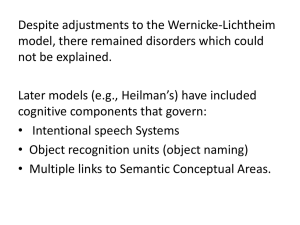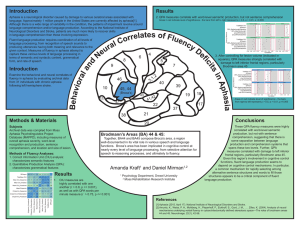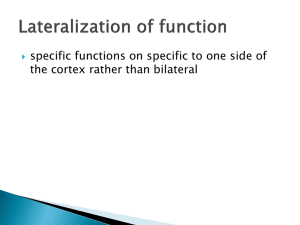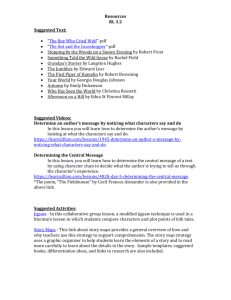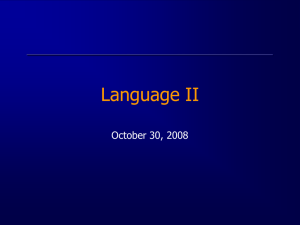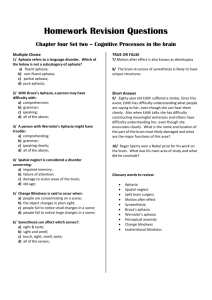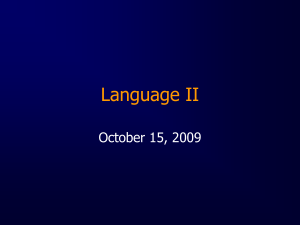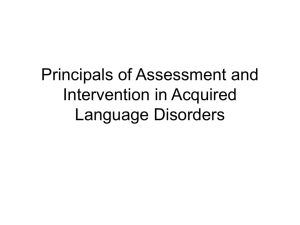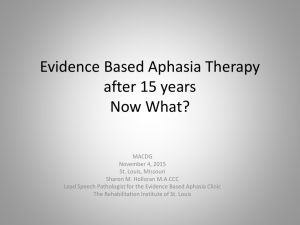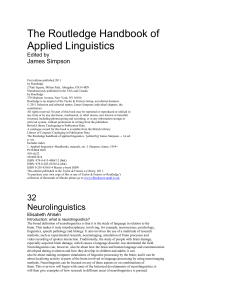Language (and speech) characteristics of primary
advertisement
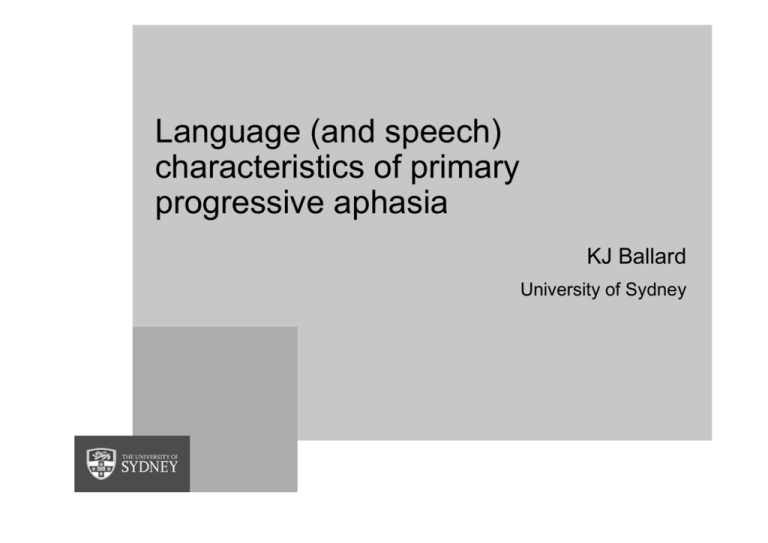
Language (and speech) characteristics of primary progressive aphasia KJ Ballard University of Sydney Expressing our ideas Semantics Syntactic Structure Phonological Representation Conversion to Motor Commands Execution (Speech Production) Primary Progressive Aphasia 1. Difficulty with language (or speech) - Word-finding problems (pauses, substitutes) - Grammatical errors in sentences - Impaired comprehension - Effortful halting speech 2. Aphasia is the prominent deficit at onset - No behavioural, memory, or visuospatial problems 3. No alternative explanation - Non-degenerative or psychiatric diagnoses Gorno-Tempini et al 2011; Leyton et al., 2012 International Consensus Criteria (ICC) Gorno-Tempini et al (2011) Classification of primary progressive aphasia and its variants. Neurology 76, 1006-14. … developed by an international group …a classification of primary progressive aphasia based on specific speech and language features … to improve the uniformity of case reporting and the reliability of research results … nonfluent/agrammatic, semantic, and logopenic … classification can be further specified … if pathologic or genetic data are available ... lists of features and suggested assessment tasks 4 Subtypes › Semantic Dementia - Impaired naming and single word comprehension - Degraded semantic/object knowledge - Intact word repetition, No evidence of motor speech disorder or agrammatism › Progressive Nonfluent Aphasia - Grammatical errors and/or - Motor Speech (Apraxia): effortful segmented speech with distorted speech sounds - Intact single word comprehension and semantic/object knowledge › Logopenic Aphasia - Impaired word retrieval and phrase / sentence repetition - Intact single word comprehension and semantic/object knowledge - No evidence of motor speech disorder or agrammatism 5 Speech and Language Semantic Dementia PNFA – Agrammatism Logopenic Aphasia PNFA – Motor Speech Dysarthria Semantics Syntactic Structure Phonological Representation Conversion to Motor Commands Execution (Speech Production) › The ICC can be applied to most cases of PPA using a speech and language assessment scale based on four key variables › Assessment: - Semi-structured interview - Tasks of naming, single word repetition and comprehension, sentence repetition and comprehension › Scale - Questionable / Definite / Severe Algorithm (Leyton et al 2012) See also Mesulam et al. 2012 Brain 8 Algorithm (Mesulam et al 2012, Brain) See also Sajjadi et al 2012 Neurology9 Treatment › Word retrieval therapy - Naming pictures / objects - +/- describing semantic features - Limited or no transfer to untreated words - Return to baseline 2-8 months post › Factors to consider - Familiar objects/photos and environment - Word meaning intact - Intensity of practice, “mastery”, continued practice Croot Nickels Laurence Manning Aphasiology 2009 Bringing words back to mind › Improving word production in Semantic Dementia › Four participants – - focus on items still meaningful to participants - significant improvements in naming of trained items - no changes in untrained items - Improvement evident within 3 weeks of practice › Improvement established from simple, repetitive practice of word-picture pairing, carried out at home › Conclusion: Simple home-practice programs can be effective for improving word retrieval, even for the more severe patient Savage, Ballard, Piguet, & Hodges (in review) Other Treatments › Sentence production (PNFA) › Articulation (PNFA) › Alternative or augmentative communication systems › Communication and discourse for social inclusion and participation 12

